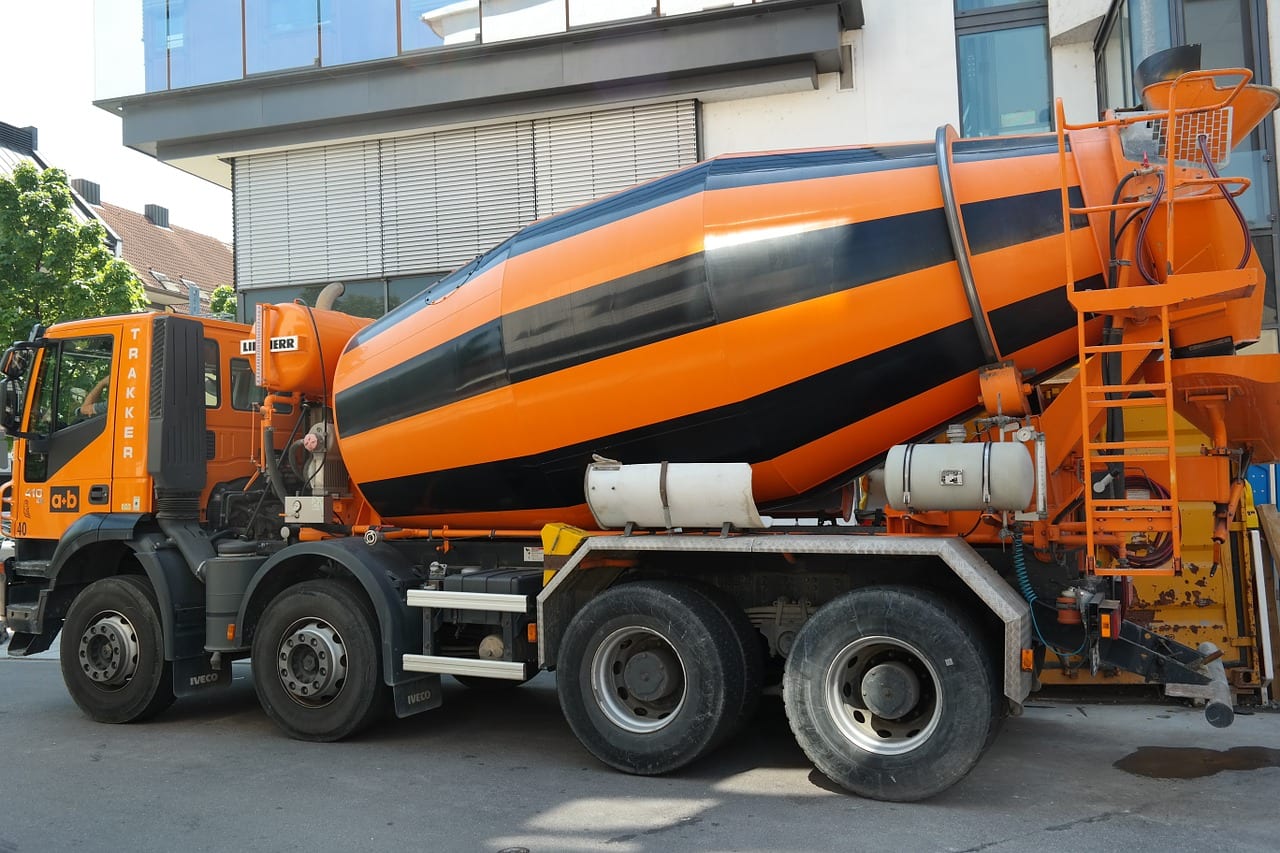Understanding the Logging Industry
Logging equipment financing can be a complex process due to industry risks and equipment specialization. However, by understanding the financing options available, preparing a strong business plan, and implementing effective management strategies, you can secure the necessary funding for your logging business. Whether you choose equipment loans, leasing, or alternative financing, the right approach will help you achieve long-term success in the competitive logging industry.
Industry Overview
The logging industry involves the cutting, skidding, on-site processing, and transportation of trees for various uses, including lumber production, paper manufacturing, and biomass energy.
- Market Trends: The demand for wood products fluctuates based on construction trends, government regulations, and environmental policies.
- Key Players: Large logging companies, independent contractors, and forestry management firms.
- Regulations: Stringent environmental regulations and safety standards impact logging operations.
Types of Logging Equipment
The logging industry requires specialized equipment designed for efficiency, safety, and durability. Here’s a list of essential logging equipment:
1. Harvesting Equipment
Feller Bunchers:
- Function: Cut and gather trees in a single step.
- Types: Wheeled and tracked machines suitable for different terrains.
Harvesters:
- Function: Cut and delimb trees, often equipped with computerized measuring systems for precision.
Chainsaws:
- Function: Used for manual cutting and trimming, essential for smaller operations or precise tasks.
2. Extraction Equipment
Skidders:
- Function: Drag cut trees from the forest to a loading area.
- Types: Cable skidders and grapple skidders.
Forwarders:
- Function: Transport logs from the forest to a roadside landing.
Yarders:
- Function: Use cables to transport logs on steep or difficult terrain, often seen in mountainous areas.
3. Processing Equipment
Delimbers:
- Function: Remove branches from felled trees.
- Types: Chain flail delimbers and stroke boom delimbers.
Debarkers:
- Function: Strip bark from logs before further processing.
Chippers:
- Function: Convert wood waste into chips for pulp production or biomass fuel.
4. Loading and Transportation Equipment
Log Loaders:
- Function: Load cut logs onto trucks or trailers for transportation.
- Types: Trailer-mounted, knuckleboom, and wheeled loaders.
Logging Trucks:
- Function: Transport logs from the forest to mills or processing facilities.
Trailers:
- Function: Designed for specific log sizes and weights, enhancing transportation efficiency.
5. Road Construction and Maintenance Equipment
Bulldozers:
- Function: Clear land and build access roads in forested areas.
Excavators:
- Function: Dig trenches, remove obstacles, and maintain logging roads.
Graders:
- Function: Level surfaces and maintain forest roads for safer transportation.
Challenges in Financing Logging Equipment
1. High Costs and Specialized Equipment
- Cost: Logging equipment is expensive, with high initial purchase prices and ongoing maintenance costs.
- Specialization: Equipment is often customized for specific operations, limiting resale value and increasing financing risks.
2. Environmental and Regulatory Risks
- Regulations: Compliance with environmental laws can impact operations and financial stability.
- Sustainability: Lenders may be cautious due to the environmental impact of logging activities.
3. Market Volatility
- Economic Fluctuations: Demand for timber can be cyclical, influenced by construction trends and global markets.
- Weather Dependence: Adverse weather conditions can disrupt operations and affect revenue.

Financing Options for Logging Equipment
Financing logging equipment requires understanding the various options available and choosing the best fit for your business needs.
1. Equipment Loans
- What It Is: A loan specifically for purchasing equipment, with the machinery itself as collateral.
- Pros: Own the equipment once the loan is paid off; potential tax benefits.
- Cons: Requires a down payment; interest rates can vary based on credit score.
Key Considerations:
- Down Payment: Typically 10-20% of the equipment cost.
- Interest Rates: Fixed or variable rates, depending on lender policies.
- Loan Terms: Usually range from 3 to 7 years, aligned with equipment lifespan.
2. Equipment Leasing
- What It Is: Renting equipment for a fixed period, often with options to purchase at lease end.
- Pros: Lower upfront costs; easier upgrades to newer equipment; preserves cash flow.
- Cons: May end up costing more over time; limited ownership rights during the lease term.
Types of Leases:
- Operating Lease: Short-term lease with no ownership, suitable for rapidly depreciating equipment.
- Capital Lease: Long-term lease with purchase option, often used for essential equipment.
Key Considerations:
- Lease Terms: Typically 1 to 5 years, allowing flexibility for equipment upgrades.
- Purchase Options: Lease-to-own agreements for eventual ownership at a reduced cost.
- Maintenance: Some leases include maintenance, reducing operational expenses.
3. SBA Loans
- What It Is: Government-backed loans designed to support small businesses with favorable terms.
- Pros: Lower interest rates; flexible repayment terms; support for small businesses.
- Cons: Lengthy application process; strict eligibility requirements.
Key Considerations:
- Eligibility: Must meet specific criteria, including credit score and business history.
- Loan Amounts: Typically range from $500,000 to $5 million for equipment financing.
- Repayment Terms: Up to 10 years, providing flexibility in cash flow management.
4. Line of Credit
- What It Is: A revolving credit line that allows you to borrow as needed, similar to a credit card.
- Pros: Only pay interest on the amount used; flexible repayment terms; good for cash flow management.
- Cons: Can be challenging to manage if not disciplined; potential for higher interest rates.
Key Considerations:
- Credit Limit: Based on business creditworthiness and collateral value.
- Interest Rates: Variable rates, often tied to the prime rate.
- Renewal: Annual renewal requirements may include financial reviews and updates.
5. Vendor Financing
- What It Is: Financing offered directly by equipment manufacturers or suppliers.
- Pros: May include incentives like discounts or deferred payments; easier approval process.
- Cons: Limited to specific vendors; terms may not be as favorable as other options.
Key Considerations:
- Incentives: Vendor promotions can reduce costs, such as 0% financing or deferred payments.
- Terms: May include restrictive conditions or higher interest rates than traditional financing.
6. Alternative Financing Options
Merchant Cash Advances:
- Function: Provides a lump sum in exchange for a percentage of future sales.
- Consideration: Higher costs compared to traditional loans, often suitable for short-term needs.
Peer-to-Peer Lending:
- Function: Connects borrowers with individual investors online for direct financing.
- Consideration: Flexibility in terms but requires thorough business vetting.
Covers many types of equipment

Recycling Equipment

Waste Truck

Crushers and Garbage Tractors
Easier to get than a traditional business loan
Less paperwork
Fast processing time
Less stringent requirements for qualifying
No collateral needed, the equipment is the collateral
May require less credit score for you and your business as well
Strategies to Secure Logging Equipment Financing
Securing financing in the logging industry can be challenging, but the following strategies can improve your chances:
1. Improve Creditworthiness
- Personal and Business Credit Scores: Maintain good credit by paying bills on time and reducing debt.
- Credit History: Establish a strong track record of responsible financial management.
2. Prepare Comprehensive Business Plans
- Detailed Business Plan: Clearly outline your business goals, market analysis, financial projections, and operational strategies.
- Risk Assessment: Address potential risks and mitigation strategies, demonstrating preparedness to lenders.
3. Demonstrate Industry Expertise
- Experience: Highlight relevant industry experience and successful project completion.
- Certifications: Obtain certifications in forestry management, environmental practices, or equipment operation.
4. Provide Collateral
- Tangible Assets: Offer additional collateral, such as real estate or other equipment, to secure financing.
- Inventory and Receivables: Use inventory or accounts receivable as collateral for added security.
5. Build Strong Relationships with Lenders
- Lender Relationships: Foster positive relationships with lenders by maintaining transparency and open communication.
- Professional Networks: Leverage industry connections to gain insights and recommendations for trusted financing partners.
6. Explore Multiple Financing Options
- Diversification: Consider multiple financing options to find the best terms and conditions.
- Comparison Shopping: Compare interest rates, terms, and fees from different lenders to secure the best deal.
Tips for Successful Logging Business Management
Running a successful logging business involves more than securing financing. Here are some tips for effective management:
1. Focus on Safety and Compliance
- Safety Training: Provide regular safety training for employees to minimize accidents and injuries.
- Regulatory Compliance: Stay updated on environmental regulations and obtain necessary permits.
2. Invest in Equipment Maintenance
- Regular Maintenance: Schedule routine maintenance to prolong equipment life and reduce downtime.
- Parts Inventory: Keep a stock of essential spare parts for quick repairs and replacements.
3. Optimize Operational Efficiency
- Crew Management: Hire skilled operators and laborers with experience in logging operations.
- Technology Integration: Use technology, such as GPS tracking and data analytics, to optimize operations and improve efficiency.
4. Enhance Customer Relationships
- Communication: Maintain open lines of communication with clients to manage expectations and build trust.
- Quality Assurance: Ensure high-quality work and timely project completion to foster positive relationships and repeat business.
5. Diversify Services
- Service Expansion: Consider offering additional services, such as land clearing, road construction, or forestry consulting.
- Market Expansion: Explore new markets or regions to diversify revenue streams and reduce reliance on a single source of income.
Logging Truck and Equipment Financing Programs
At Liberty Capital Group, Inc., we offer aggressive financing programs designed to meet the diverse needs of our clients. Our solutions typically involve two primary options:
– Equipment Financing: Spread the cost of your roll-off and garbage trucks over time with fixed payment terms.
– Equipment Leasing: Opt for off-balance sheet financing with Fair Market Value (FMV) leases, providing flexibility at the end of the lease term.
Additional Financing Benefits Our financing options include:
– $99 for the First 6 Months: Start with minimal upfront costs.
– 90-Day Deferred Payments: Pay nothing for the first three months.
– Working Capital Loans: Access short-term cash flow solutions for immediate needs.
– Fast Approvals: Apply online for funding up to $250,000 with a Streamlined Process.
Our small business financing experts are available to guide you through the funding Process.
Despite technological advancements, loans, especially in logging truck and equipment financing, predominantly involve personal interaction with an underwriter to ensure as fraud prevention. Automation may not suffice, particularly when dealing with a third party like the vendor and the complexities of equipment purchase. In such scenarios, business owners are often better served by collaborating with a Business Loans Broker like Liberty Capital Group, Inc., who can steer them in the right direction.
Instant Quote Online
Use our instant online quote calculator to get an accurate no obligation quote.
Apply Online
Complete our quick online application. Application takes 5 mins.
Review Your Options
We will contact you to review your options.
Get Funds
Money will be deposited in your account in as little as 24 hours.
